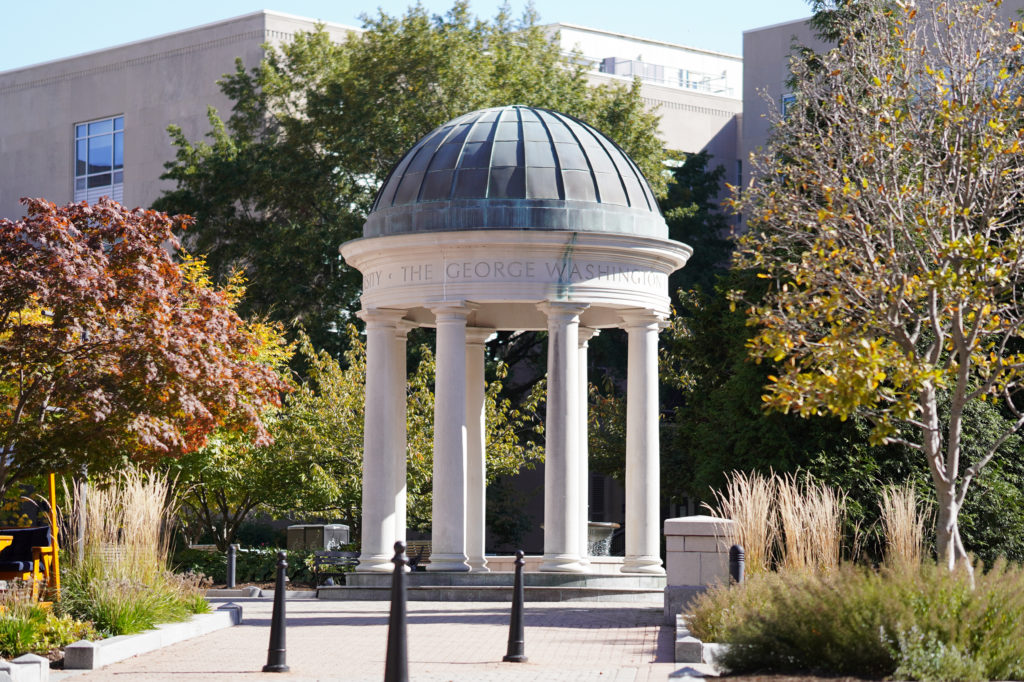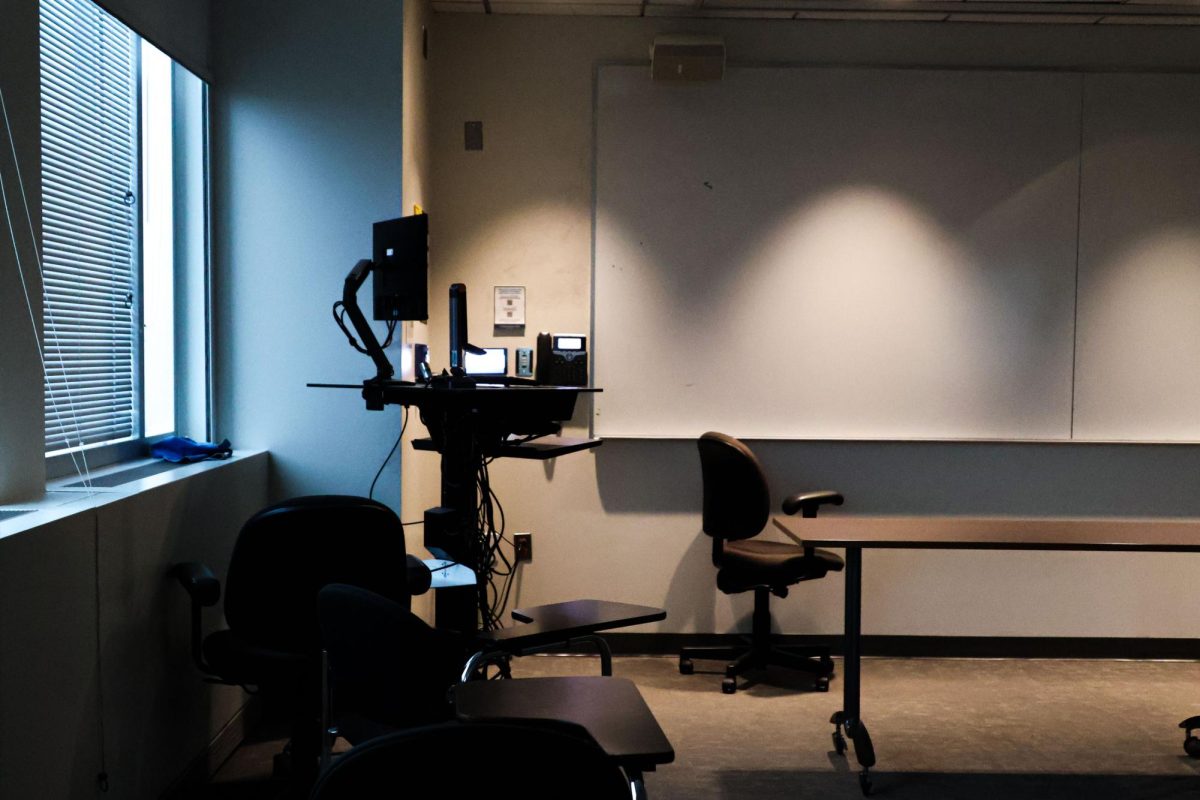A pair of student organizations designed and planted gardens of native vegetation in D.C. last weekend.
Students for Indigenous and Native American Rights and Environmental Justice Action Network participated in a challenge in April to create gardens of plants native to the area led by an organization that supports indigenous agriculture. Students in both organizations said they joined the challenge to share the significance of indigenous vegetation in an area to other students.
SINAR’s garden is located in Piscataway Park in Maryland and is shaped like a turtle with an orange, yellow and pink color scheme to resemble the Piscataway tribe’s flag. EJAN’s garden is located by the Milken Institute School of Public Health next to a sculpture the University received from the George Zongolopoulos Foundation.
The challenge, called “Wild Visions Habitat Creation Challenge,” was hosted by Garden for Wildlife, a program part of the National Wildlife Federation — a nonprofit organization focused on conservation education. Rosalie Bull, the campus engagement lead for Garden for Wildlife, said 13 participating student groups from seven universities, including GW, Gallaudet and Georgetown universities, created 5,600 square feet of new wildlife habitat throughout the D.C. area.
Bull said each student organization was responsible for designing their gardens and the program supplied plants indigenous to D.C., including Smooth Blue Aster, Black-Eyed Susan, Foxglove Beardtongue, Swamp Milkweed, Gray Leaf Goldenrod and Orange Butterfly Milkweed. Bull said native plants serve as a foundation of a local ecology and that more individual action, like planting at their homes, can create more sustainable ecosystem.
When invasive species enter an ecosystem they spread rapidly, causing disruption to native vegetation, which has the potential to harm the environment.
“Those plants matter to the creatures that call them home,” Bull said. “Maybe you feel small, just working at an individual level. But if you think about the scale for insects, and kind of the smaller creatures that inhabit our world, your yard is a universe.”
Bull said plants provide subsistence for insects, which are the link between energy and photosynthesis and support the entire food chain. She said people should plant indigenous vegetation in their respective areas because the plants are more accustomed to the environment.
“They have evolved for millennia with the other insects in this area, as well as the other plants and vegetation,” Bull said. “They just have whether it is like a role that cannot be replaced with anything else, or just a role that’s better suited to providing food, habitat or shelter to other insects. They typically do that better than a non-native species does.”
First-year Jacob Brittingham, the secretary of SINAR, said it is important for indigenous people to maintain the landscape and ensure it is not being “abused” because of the familial, historical and cultural connection to the environment.
“During the Trail of Tears, whenever those people of the five Civilized Tribes were removed from their land, and there was nobody to take care of the land after them, that land completely lost its nutrients and its nourishment,” Brittingham said. “It wasn’t able to sustain its environment, because native people had their systems and had their ways to maintain the land and protect it.”
The Trail of Tears was the forced migration of approximately 100,000 indigenous Americans from the southwest region to the western area of the country during the 1830s, some 15,000 people died along the journey.
SINAR president and senior Riya Sharma said the organization chose Piscataway Park because it is a park named after the indigenous Piscataway people. Since the organization’s garden is located in the park, the group designed their garden in the shape of the Piscataway flag and named it Wawpaney, which means dawn or sunrise in the Nanticoke’s peoples language, she said.
The Nanticoke people lived in what is now Maryland and southern Delaware, and migrated toward now western New York state, Ohio and Indiana after 1722.
“We thought that dawn represented birth of something new, birth of these new species, birth of this bed to honor the Piscataway people,” Sharma said.
Sophomore Kaitlyn Gang, the president of EJAN, said the challenge was an opportunity for students to be creative but also educate themselves on the role of native plants and their importance in an ecological structure. She said a visual component of environmental justice on campus exposes more people to environmentalism.
“If it’s not really in front of you, it’s very hard to get people to care,” Gang said. “This is just one step in the direction of get people to start getting interested about these things, especially because green jobs and sustainability in general is such a large up and coming thing and it affects a lot more people than you think.”
Gang said people should care about plants growing in their indigenous areas because the vegetation is what “should be on the ground” instead of nonnative species like crabgrass, often found in landscaping with origins in Europe or Eurasia.
“We look outside and we see just like trees,” Gang said. “We see a lot of different types of plants and stuff like that, and we don’t really realize how it’s negatively impacting the area because it’s not supposed to be there.”





